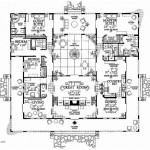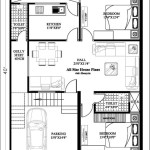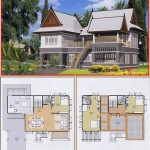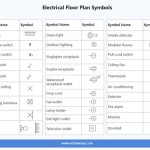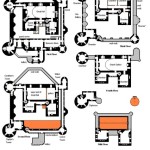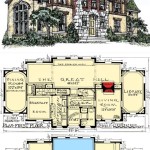Understanding House Floor Plan Images: A Comprehensive Guide
House floor plan images are visual representations illustrating the arrangement of rooms within a structure. They serve as crucial tools for architects, builders, interior designers, and homeowners, providing a detailed layout of a property. These images are not merely blueprints; they are comprehensive guides that enable visualization of space, planning of furniture placement, and understanding of the overall flow of a home.
The information contained within a floor plan image goes beyond the simple dimensions of rooms. It encompasses the placement of doors, windows, staircases, plumbing fixtures, and even electrical outlets. Depending on the level of detail, a floor plan image may also include information regarding building materials, insulation, and structural components. A clear understanding of how to interpret these images is paramount for anyone involved in the construction, renovation, or sale of a property.
Numerous types of floor plan images cater to different needs and project stages. These range from basic renderings used for marketing purposes to highly detailed technical drawings used for construction. Each type serves a specific function and conveys information with varying degrees of precision and complexity. Recognizing the different types of floor plan images and their intended purpose is essential for effective communication and project management.
Key Point 1: Types of House Floor Plan Images
There are several distinct types of house floor plan images, each offering a unique perspective and level of detail. Understanding the nuances of each type is crucial for choosing the appropriate visual aid for a given purpose.
2D Floor Plans: These are the most common type of floor plan image. They provide a top-down view of the house, showing walls, doors, windows, and room dimensions. 2D floor plans are typically drawn to scale, allowing for accurate measurements and space planning. The simplicity and clarity of 2D floor plans make them ideal for understanding the basic layout of a house. They are widely used in real estate listings, architectural design, and interior design projects.
3D Floor Plans: These images offer a more realistic representation of the house by adding depth and perspective. They often include textures, colors, and furniture, providing a better sense of the overall look and feel of the space. 3D floor plans are particularly useful for visualizing how furniture will fit into a room and for understanding the spatial relationships between different areas of the house. They are frequently used in marketing materials to attract potential buyers or renters.
Interactive Floor Plans: These are digital floor plans that allow users to interact with the image. Users can typically zoom in and out, rotate the view, and even take virtual tours of the house. Interactive floor plans often include additional information such as room dimensions, appliance specifications, and furniture details. They are valuable tools for online real estate listings and for allowing remote collaboration on design projects.
Technical Drawings: These are highly detailed floor plans used by architects and builders for construction purposes. They include precise measurements, structural information, and details about building materials and systems. Technical drawings often include cross-sections and elevations, providing a comprehensive view of the house's construction. They are essential for ensuring the accuracy and safety of the building process.
Conceptual Floor Plans: These are preliminary sketches used in the early stages of design. They provide a general overview of the layout and are used to explore different design options. Conceptual floor plans are typically less detailed and more flexible than other types of floor plans, allowing for easy modification and experimentation.
Key Point 2: Interpreting Key Elements in Floor Plan Images
Effective interpretation of house floor plan images requires familiarity with common symbols, conventions, and abbreviations. Understanding these elements allows one to accurately decipher the information conveyed by the image and to make informed decisions about space planning, design, and construction.
Walls: Walls are typically represented by thick, solid lines. The thickness of the line can indicate whether the wall is a load-bearing wall or a partition wall. Walls are often labeled with their dimensions and material specifications.
Doors: Doors are usually represented by a curved line that indicates the direction of the door swing. The width of the door opening is typically indicated in inches or feet. The symbol for a pocket door, which slides into the wall, is different from that of a hinged door.
Windows: Windows are represented by two or more parallel lines, often with a break in the middle. The width and height of the window are typically indicated, as well as the type of window (e.g., sliding, casement, double-hung).
Stairs: Stairs are represented by a series of parallel lines, with an arrow indicating the direction of ascent. The number of steps and the height of each riser are typically indicated.
Plumbing Fixtures: Plumbing fixtures such as toilets, sinks, showers, and bathtubs are represented by stylized symbols. The symbols are generally standardized, allowing for easy recognition. The location of water supply lines and drain pipes may also be indicated.
Electrical Outlets: Electrical outlets, switches, and light fixtures are represented by specific symbols. These symbols are typically standardized and are used to indicate the location of electrical components.
Furniture: While not always included in all floor plan types, furniture may be represented by simplified shapes. This helps visualize the layout and flow of the space. Some 3D floor plans provide highly detailed representations of furniture.
Dimensions: Dimensions are typically indicated by lines with arrows at each end, showing the distance between two points. It is important to pay attention to the units of measurement (e.g., inches, feet, meters) to ensure accurate interpretation.
Abbreviations: Floor plan images often use abbreviations to save space. Common abbreviations include "WD" for washing machine and dryer, "REF" for refrigerator, "CL" for closet, and "DN" for down (referring to stairs). A legend may be provided to explain the abbreviations used in a particular floor plan image.
Key Point 3: Utilizing Floor Plan Images for Different Purposes
House floor plan images are versatile tools that can be used for a wide range of purposes. Their application extends beyond the design and construction phases, influencing real estate transactions, interior design projects, and even home improvement endeavors.
Real Estate: Floor plan images are essential for real estate listings. They allow potential buyers to visualize the layout of a property and to understand the flow of space. 2D and 3D floor plans are commonly used in online listings and brochures to provide a clear and appealing representation of the house. Interactive floor plans offer an even more engaging experience, allowing buyers to virtually tour the property.
Interior Design: Interior designers rely heavily on floor plan images to plan the layout of furniture, lighting, and accessories. They use floor plans to experiment with different design options and to ensure that the space is both functional and aesthetically pleasing. Floor plans also enable designers to communicate their vision to clients and to obtain feedback on the proposed design.
Construction: Architects and builders use technical floor plan drawings to guide the construction process. These drawings provide detailed instructions on the dimensions, materials, and construction methods to be used. Accurate floor plans are essential for ensuring that the building is constructed according to the design and that it meets all relevant building codes.
Renovation: Homeowners use floor plan images to plan renovations and home improvement projects. Floor plans help them visualize the changes they want to make and to determine the feasibility of their ideas. They can also use floor plans to obtain quotes from contractors and to communicate their requirements effectively.
Space Planning: Floor plan images are valuable for efficient space planning. By analyzing the dimensions and layout of a room, one can optimize furniture placement, storage solutions, and traffic flow. This is particularly useful for small spaces where maximizing the use of available square footage is crucial.
Furniture Selection: Detailed floor plans including accurate measurements allow for careful furniture selection. This prevents choosing pieces that are too large or small for the space, ensuring a harmonious and functional layout.
Ultimately, the effectiveness of house floor plan images hinges on their clarity, accuracy, and the understanding of the user. The capacity to interpret and utilize these images effectively unlocks a world of possibilities, spanning from real estate and design to construction and personal home improvement projects.

House Plans How To Design Your Home Plan

Peach Tree House Plan Ranch Floor Designs

House Plan Maywood Sater Design Collection

Small House Design 2024001 Pinoy Eplans Floor Plans

House Plans How To Design Your Home Plan

Modern Style House Plan 7561 Joshua 2

House Plan Morningside Court Sater Design Collection

Grand Ridge House Plan A Classic Design Archival Designs

Truoba 723 2 Floor House Plan

Home Floor Plans House Plan Drawings

